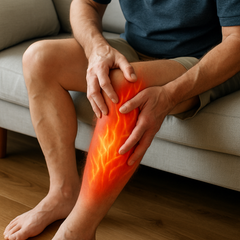Have you ever considered how your chair might be affecting your productivity? In today's fast-paced world, where many of us spend countless hours seated at desks, the importance of ergonomics cannot be overstated. Ergonomics is not just a buzzword; it's an essential component of modern work environments and everyday life. From the office to the comfort of our homes, creating an ergonomic space can significantly enhance our well-being and efficiency.
Have you ever considered how your chair might be affecting your productivity? In today's fast-paced world, where many of us spend countless hours seated at desks, the importance of ergonomics cannot be overstated. Ergonomics is not just a buzzword; it's an essential component of modern work environments and everyday life. From the office to the comfort of our homes, creating an ergonomic space can significantly enhance our well-being and efficiency.
Understanding Ergonomics
At its core, ergonomics is the study of designing or arranging workplaces, products, and systems to fit the people who use them. This definition, as noted by Vocabulary.com, highlights the human-centric approach of ergonomics, aiming to optimize comfort and functionality. The concept of ergonomics has evolved significantly since its inception in the 1950s, growing from a niche interest into a vital scientific discipline that combines insights from engineering, physiology, and psychology.
The Relevance and Purpose of Ergonomics Today
In the contemporary world, ergonomics plays a crucial role in preventing work-related injuries and enhancing quality of life. As we increasingly rely on technology and spend more time in static positions, the risk of developing musculoskeletal disorders rises. Ergonomics addresses these challenges by promoting healthier ways to interact with our environments, thereby reducing strain and discomfort.
Ergonomics encompasses three main domains: physical, cognitive, and organizational, as defined by the International Ergonomics Association (IEA). Physical ergonomics deals with the human body's response to physical activities, cognitive ergonomics focuses on mental processes such as perception and memory, and organizational ergonomics involves optimizing socio-technical systems, including their organizational structures and policies.
By understanding and implementing ergonomic principles, we can create environments that not only support our physical health but also enhance our mental well-being and productivity. Whether it's through adjustable office furniture, ergonomic tools, or thoughtful space design, the goal is to tailor environments to meet individual needs, ultimately leading to a more comfortable and efficient lifestyle.
The evolution of ergonomics
To fully appreciate the significance of ergonomics today, it's essential to delve into its history and evolution. The term "ergonomics" was first coined in 1950 by British researcher K.F. Hywel Murrell, who sought to create a discipline that combined the study of human capabilities with the design of tools and workspaces. Initially, ergonomics was primarily applied in military settings, where optimizing human performance and reducing fatigue were critical. Over time, this field expanded beyond military applications, driven by the industrial boom and the need for safer, more efficient workplaces.
Ergonomics has since grown into a comprehensive scientific discipline that integrates knowledge from various fields, including engineering, physiology, and psychology. This multidisciplinary approach enables ergonomists to design environments that accommodate the diverse needs of individuals, ultimately enhancing both comfort and productivity. By understanding the interactions between humans and their environments, ergonomics aims to create systems that support human well-being and performance.
Practical applications of ergonomic principles
In today's world, the applications of ergonomics are vast and varied, extending from corporate offices to home environments. One of the most common applications is in the design of office furniture. Ergonomic chairs and desks are specifically engineered to support the natural posture of the human body, reducing strain on the back, neck, and shoulders. These designs often include adjustable features, allowing users to tailor their workspace to their individual needs.

Women's Posture Shirt™ - Hvid
Holdningskorrigerende T-shirt som kan reducere ryg-, nakke- og skuldersmerter.
Beyond furniture, ergonomics plays a crucial role in the design of computer equipment. Ergonomic keyboards and mice are crafted to minimize wrist strain, a common issue for those who spend long hours working at a computer. Similarly, monitor stands and laptop risers help position screens at eye level, preventing neck strain and promoting better posture.
Ergonomics also extends into the realm of home design. From kitchen layouts that minimize unnecessary movement to living spaces that promote relaxation, ergonomic principles can be applied to enhance comfort and efficiency in daily life. Simple adjustments, like ensuring proper lighting and maintaining a clutter-free environment, can significantly impact one's physical and mental well-being.
Ergonomics in the workplace: boosting health and productivity
The workplace is a critical area where ergonomics can have a profound impact. Implementing ergonomic solutions in the office not only improves employee health but also boosts productivity. Studies have shown that ergonomic interventions can lead to a significant reduction in work-related musculoskeletal disorders, which are a leading cause of absenteeism and lost productivity.
For instance, a case study conducted by Dohrmann Consulting found that companies that invested in ergonomic assessments and adjustments saw a decrease in employee discomfort and an increase in overall job satisfaction. These improvements translated into lower healthcare costs and a more engaged workforce.
Moreover, organizations that prioritize ergonomics often experience a reduction in workplace accidents and injuries. By designing workstations that accommodate the physical capabilities of employees, businesses can create safer environments that minimize the risk of injury. This proactive approach not only protects employees but also enhances the company's bottom line by reducing compensation claims and associated costs.
In conclusion, the integration of ergonomic principles into both professional and personal spaces is essential for fostering environments that support health, well-being, and productivity. As we continue to navigate an increasingly digital and sedentary world, the importance of ergonomics will only grow, prompting further innovation and adaptation in how we design our surroundings.
Ergonomics in the future: embracing innovation
As we look to the future, the field of ergonomics is poised to evolve alongside technological advancements. The integration of artificial intelligence (AI) and smart technology offers exciting possibilities for creating even more personalized ergonomic solutions. For example, AI-driven systems could analyze individual work habits and suggest adjustments to optimize comfort and efficiency. These innovations have the potential to revolutionize how we interact with our environments, making ergonomics more intuitive and accessible.
Moreover, the rise of remote work and virtual environments presents new challenges and opportunities for ergonomics. As more people work from home, the demand for ergonomic home office solutions has surged. Companies and designers are responding by developing products that cater to the unique needs of remote workers, ensuring they can maintain comfort and productivity outside traditional office settings. In virtual environments, ergonomics will play a crucial role in designing interfaces and interactions that minimize cognitive load and enhance user experience.
Applying ergonomic principles in everyday life
Incorporating ergonomic principles into daily routines doesn't have to be complicated. Simple adjustments can make a significant difference in comfort and health. Start by setting up an adjustable workstation that allows you to switch between sitting and standing positions, reducing the strain on your body. Ensure your chair supports your lower back and encourages good posture. Regular breaks are essential; take a few minutes every hour to stretch and move around, preventing stiffness and fatigue.

Anodyne® Holdningstrøje til kvinder
Holdningstrøje der støtter og hjælper dig til bedre kropsholdning i hverdagen.
Investing in ergonomic tools can also enhance your daily comfort. Consider using a keyboard and mouse designed to reduce wrist strain, and position your monitor at eye level to avoid neck discomfort. These small changes can have a big impact on your overall well-being, making your work and home environments more supportive and accommodating.
Ofte stillede spørgsmål
Hvad er ergonomi, og hvorfor er det vigtigt?
Ergonomi handler om at designe og arrangere arbejdspladser, produkter og systemer, så de passer til de mennesker, der bruger dem. Dette er vigtigt, fordi det reducerer risikoen for skader og øger komforten, hvilket forbedrer både sundhed og produktivitet.
Hvordan kan jeg forbedre ergonomien på min arbejdsplads?
For at forbedre ergonomien på din arbejdsplads kan du implementere justerbare møbler, sikre korrekt belysning og tage regelmæssige pauser for at strække og bevæge dig. Ergonomiske værktøjer som tastaturer og mus kan også hjælpe med at reducere belastning.
Hvilke produkter er designet med ergonomi i mente?
Produkter designet med ergonomi i mente inkluderer ergonomiske stole, tastaturer, mus og skærmstativer. Disse produkter er skabt for at minimere belastning og fremme en sund arbejdsstilling.
Er ergonomi kun for kontorarbejdere?
Nej, ergonomi er relevant for alle, uanset om du er fabriksarbejder, studerende eller hjemmegående. Ergonomiske principper kan anvendes i enhver situation for at forbedre komfort og reducere risikoen for skader.
Kilder
- ErgoPlus. "Ergonomics: Definition, Domains, and Applications."
- EcoOnline. "Ergonomics."
- International Ergonomics Association. "What is Ergonomics?"
- NASP. "What is Ergonomic Safety?"
- County Risk. "5 Eye-Opening Facts About Ergonomics."
- Wikipedia. "Ergonomics."
- University of Texas Health. "Ergonomics."
- OSHA. "Ergonomics."





























